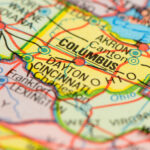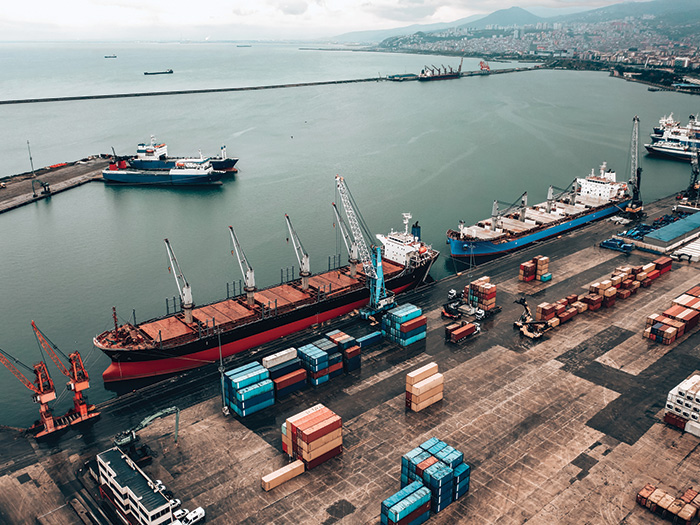Changing Tides of Natural Disasters: Ways Underwriters Can Face Marketplace Turbulence
In response to the rising number of property catastrophe losses in recent years, primary insurers and reinsurers are reconsidering their business plans and the lines of business that are underperforming — thereby creating upheaval and angst in the marketplace.
“When It Rains …”
Floods, hurricanes, wildfires and earthquakes are natural disasters that have been attracting the insurance industry’s attention in recent years.
Floods are the most frequent natural disaster in the United States. In fact, all 50 states have experienced flood losses in the past 10 years.
The formation of the National Flood Insurance Program (NFIP) in 1968 changed the insurance landscape for flood-exposed properties. The NFIP’s rating and pricing models charged policyholders in low-hazard zones higher rates than were actuarially required in order to help offset the lower rates paid by policyholders in the highest hazard zones. Even policyholders with properties that experienced repetitive flood losses received this subsidy.
In October 2021, the Federal Emergency Management Agency (FEMA) and the NFIP introduced Risk Rating 2.0, a rate structure that passes more of the cost of insuring high-hazard properties to the owners of those properties. Early estimates suggest that 77% of NFIP policyholders will see an increase in their flood rate, while 23% may see a reduction.
Risk Rating 2.0 should help minimize the amount of money the NFIP needs to borrow from the U.S. Treasury after large-scale disasters. Currently, the NFIP is more than $20 billion in debt to the U.S. Treasury, according to the Congressional Research Service.
Increased Severity
Hurricane frequency in the North Atlantic may not be much different now than it was 100 years ago, but the storms that have made landfall in recent years have packed more of a punch. Exacerbating hurricane severity is the steady development of coastal areas.
According to the National Oceanic and Atmospheric Administration (NOAA), 2020 marked the 10th consecutive year with 8 or more billion-dollar disasters. In 2017 alone, there were 16 separate billion-dollar-plus weather events in the U.S., which ultimately totaled $306.2 billion, per the United States Billion-Dollar Disaster Events 1980-2021 report by the National Centers for Environmental Information.
Wildfires in California have also become more severe in recent years. According to The Nature Conservancy, not only are total acres burned increasing over time, but the rate of increase in acres burned is also going up. In addition, wildfire season is getting longer. The number of wildfire ignitions and acres burned in November and December have increased fourfold in the most recent decade, compared with the previous three decades.
Not only has flood, hurricane and wildfire severity in the U.S. been increasing, it’s only a matter of time until California experiences its next big earthquake event. The U.S. Geological Survey and the University of California, Berkeley’s Seismology Laboratory believe that the Hayward Fault in Northern California is overdue for a significant earthquake event.
Swarms of microquakes in the Salton Sea area on the San Andreas Fault have raised concerns about the increased risk of a strong earthquake in that region, according to a 2020 U.S. Geological Survey report. The East California Shear Zone has also experienced thousands of measurable earthquakes in recent years, including magnitude 6.4 and 7.1 events in July 2019.
Recent years have also seen winter freezes in unusual places such as Texas, social justice protests and riots, pandemic business income losses, supply chain-related losses, social inflation and nuclear jury verdicts. Making a profit in this environment is increasingly difficult, and new storms seem to move in regularly.
What Lessons Have We Learned?
In addition to the increasing frequency and severity of natural disasters, the insurance industry is experiencing a talent gap. Senior staff members are retiring at a faster rate than new talent is being recruited, creating turbulence in the industry.
When times are tough, the industry tends to revert to the fundamentals. For example, it may concentrate on ideally insurable risk, which includes:
- Pure, not speculative, risk
- Fortuitous losses
- Measurable and definite losses
- Large numbers of exposure units
- Independent exposure units
- Losses that are not catastrophic
- Affordable premiums
Standard insurers often shy away from catastrophe business because catastrophe risks do not fit the ideally insurable risk model upon which their business plan is based. Excess and surplus lines insurers inherit the business, but can they provide enough help?
It’s a complex problem with no simple solution. Each surplus lines insurer may be willing and able to accept some of the high-hazard, catastrophe-exposed business, but they can’t accept all of it. The specter of 112-year-old Merced Property & Casualty Company, driven into insolvency in the aftermath of the California Camp Fire of 2018, reminds the industry that worst-case scenarios remain possible.
Challenges and Solutions
Economic and environmental realities can’t be underwritten away, no matter how skilled the underwriter.
Underwriters often hear desperate pleas from insurance brokers to write coverage for clients who need it. The sentiment is understandable, and underwriters don’t like leaving property owners without insurance coverage.
But of course, an underwriter’s job is to write business that won’t bankrupt the insurer. A wood-frame building located deep in a wildfire zone, where fire service response is likely slow, probably cannot be insured profitably — at least not at a premium that the owner would consider affordable. Likewise, a building that has experienced repetitive flood losses would face the same situation.
Economic and environmental realities can’t be underwritten away, no matter how skilled the underwriter.
The real victims, of course, are the innocent insureds — those who take reasonable measures to reduce the frequency and severity of losses and operate their businesses in a responsible manner. These insureds are too often penalized for the less responsible behavior of others. Because it’s often unclear from insurance applications who is who, underwriters are sometimes forced to paint with a brush that is overly broad.
The challenges underwriters face today are not the same ones they faced 50 years ago. But that doesn’t mean they are insurmountable.
Underwriters now have more data than ever before. Cooperation and collaboration with IT professionals and programmers can lead to the development of internal systems that can help sift through data and winnow it down to useful information.
The challenges underwriters face today are not the same ones they faced 50 years ago.
Industry loss data, as well as internal loss data, can be analyzed more rapidly than ever before to provide guidance when setting goals and targets. Several catastrophe models are commercially available, and many reinsurers have proprietary models that they use to manage their exposures — and sometimes even to help primary insurers.
These tools are useful and informative, but they have one significant limitation: The models are developed using historical catastrophe data. As such, they tend to underperform in circumstances involving unprecedented losses, such as Hurricane Katrina in 2005.
Because unprecedented events are not represented in the historical data set, statistical models are unlikely to predict them. Current model methodology uses game theory and heuristics to combat this limitation, so model results and future catastrophes may be more closely aligned than in the past.
Underwriters face daunting challenges, but they now have tools and analytics available to help them. Add these advances to underwriting discipline, pricing discipline and open communication with insureds — which remain the most effective ways for underwriters to control risks — and underwriters have the best formula for weathering the next inevitable round of storms. &
This article was originally published in “Insights: A professional Journal by the CPCU Society.”










